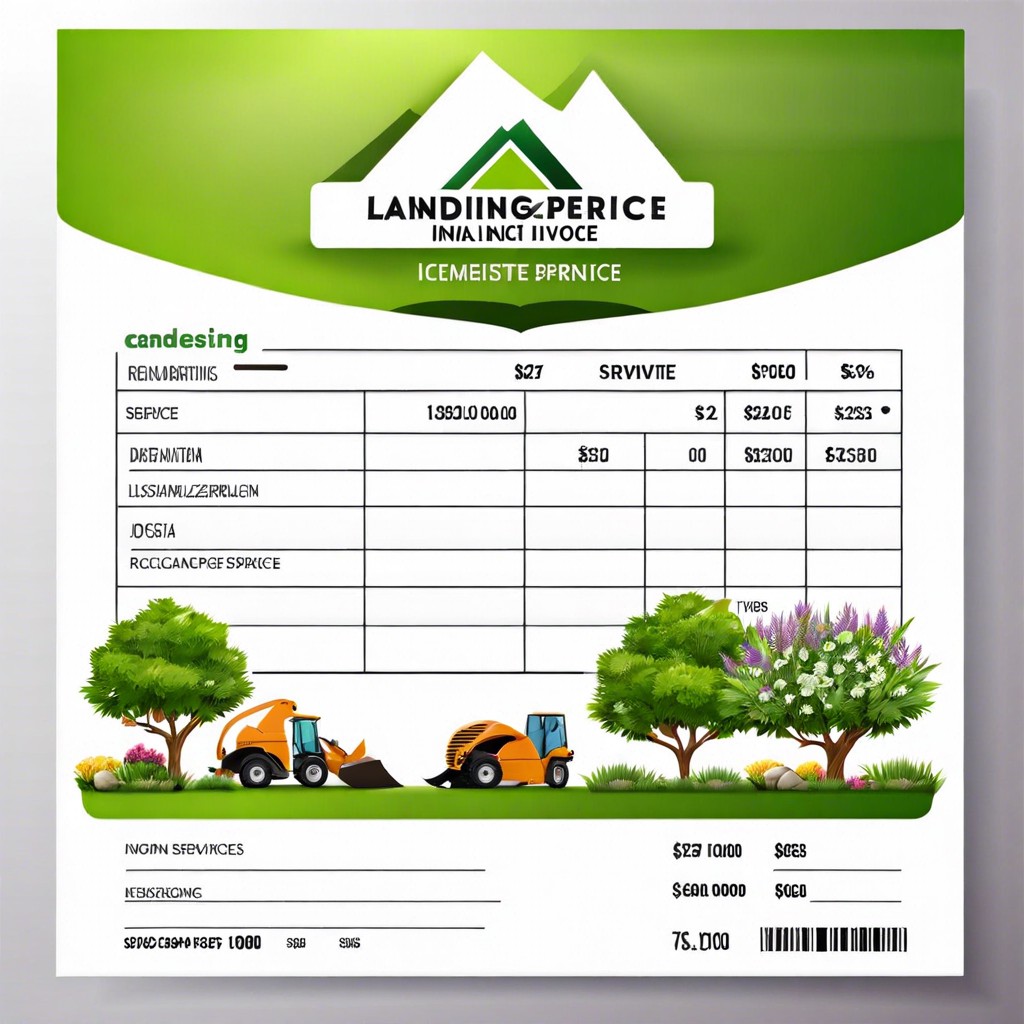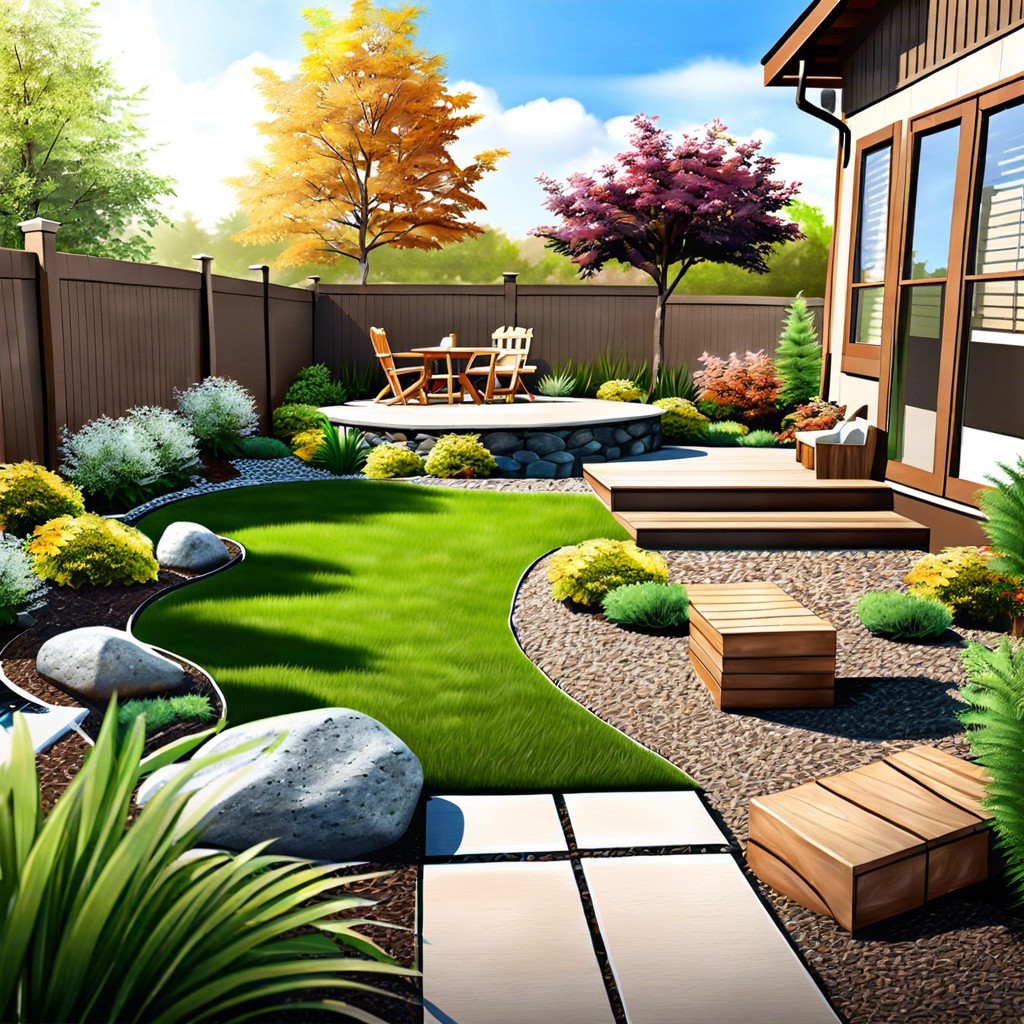Ready to shape your outdoor space? Learn how to create a well-organized landscaping estimate template that simplifies project planning and communication with clients.
Key takeaways:
- A well-structured landscaping estimate template should include business and client information, project specifics, materials, labor costs, and payment details.
- To create an accurate estimate, gather property measurements, discuss client preferences, list materials and labor, include a contingency fund, and provide a detailed breakdown of costs.
- Enhance accuracy by measuring multiple times, using automated calculations, updating costs regularly, flagging site challenges, and breaking down the project into manageable tasks.
- Using a landscaping estimate template saves time, ensures consistency, helps avoid costly mistakes, sets client expectations, improves responsiveness, and projects professionalism.
- Factors that affect the cost of landscaping projects include the scope of the project, materials chosen, labor costs, location, and unexpected issues. Flexibility and creativity can help work within any budget.
Essential Components of a Landscaping Estimate Template

A well-structured landscaping estimate template should start with your business’s basic information: Name, address, contact numbers, and logo. This little touch of personalization speaks volumes, keeping your brand top-of-mind. Follow that with the client’s information to keep things professional and organized.
Next up on the list are project specifics. This is where you spell out the services offered, whether it’s lawn care, tree trimming, or installing a koi pond that would make a fish leap for joy. Itemize these tasks because clarity is your best friend here.
Don’t forget the materials section, as it accounts for the nuts and bolts, seeds, and soil of the job. List quantities, brands, and prices. When clients see where their money might be going, trust grows like a well-watered sapling.
Include labor costs, estimating the hours needed and the rates for each crew member’s work. It’s like laying down the tracks for a smooth ride toward a beautiful landscape.
Remember to cover the often-overlooked details: taxes, discounts, and payment terms. These are the signposts that guide clients through the financial side of the journey.
Finally, a good faith estimate completion date can speed things up. Because after all, anticipation for a garden’s transformation is like waiting for that first bloom—a blend of excitement and impatience.
How to Create a Landscaping Estimate: Step-by-step
To kick things off, grab a detailed sketch or aerial view of the property you’re working on; let’s call it your canvas. Get out there and measure up! Knowing the square footage you’ll be dealing with is crucial for a spot-on estimate.
Next, have a chinwag with the homeowner. Dig into what they want – is it a lush lawn, a vegetable garden, or perhaps a stone pathway? With their vision in mind, list the materials you’ll need: plants, sod, pavers, you name it. Now’s a good time to play private detective and scope out costs for these items.
Here’s a pro tip: don’t skimp on writing down every bit of material and labor needed. If you’re going to be the Picasso of landscaping, every brushstroke (or in this case, line item) matters. Toss in estimated labor hours, and make sure to factor in the unseen heroes like soil prep and cleanup time.
Remember to include a contingency fund in your numbers. Let’s face it, nature can be as unpredictable as a cat on a skateboard. A little extra in the kitty will help cover those out-of-the-blue expenses.
Last but not least, put a price tag on your masterpiece-to-be. Aim for fair prices that keep the lights on at your business, but also don’t send your clients running for the hills. Give them a full breakdown so they see exactly where their greens are going.
And there you have it – a mighty fine landscaping estimate that rivals a work of art. Keep your clients in the loop, and they’ll be singing your praises from the rooftops (or at least from their newly installed rose garden).
Tips for Enhancing Accuracy in Landscaping Estimates
Accuracy is the name of the game when whipping up a landscaping estimate that hits the mark. Ever scribbled numbers on a napkin and hoped for the best? That’s a gamble you don’t need to take. Instead, consider measuring twic—scratch that—measure thrice to avoid that notorious “I’ll just eyeball it” error. Precision is your friend here.
Now, grab your trusty calculator or software tool. Automated calculations are like your back-pocket ace, greatly reducing the chance of math blunders. Just think of tools as your silent partner in crime, the Robin to your Batman in the fight against miscalculation.
Let’s talk plants and materials for a sec. You know that prices sway more than Elvis’s hips, right? So, regularly updating your costs is crucial. It’s like checking the weather before a picnic; stay informed, stay prepared.
And who could forget site challenges? They’re the sneaky gremlins of landscaping work. Whether it’s a stubborn old tree stump or a slope that thinks it’s a mountain, be sure to flag any extra effort these gremlins might require.
Think of your estimate as a roadmap. Detailed directions make for a smoother journey. Break down the project into bite-sized tasks. This strategy, my friend, sidesteps the big, bad wolf of overlooking tasks – a common tale of woe in estimate land.
Lastly, don’t become the town’s fortune teller. Be realistic with timelines, considering potential delays. This way, your clients won’t be left pacing, watching the grass grow, literally. With these tips in your landscaping toolkit, your estimates will become the stuff of legend. Accuracy attained!
Benefits of Using Landscaping Estimate Templates
Leveraging a landscaping estimate template can bring greater efficiency and professionalism to your proposals. With a standardized format, you’ll save time that would otherwise be spent crafting estimates from scratch. Uniformity in your documents reflects well on your business, showing potential clients that you operate with a consistent, clear methodology.
Besides time-saving, these templates can help avoid costly mistakes. Imagine forgetting to include disposal fees or underquoting materials. A well-thought-out template prompts you to account for every expense—from seedlings to labor—reducing the chance of unexpected costs biting into your profits.
Moreover, crisp, clear estimates can help set client expectations from the get-go. When customers see a detailed breakdown of costs, they gain trust in your transparent pricing and are less likely to quibble over the final invoice. This clarity can also accelerate decision-making, meaning projects can start sooner and cash flow improves.
Furthermore, in a fiercely competitive market, templates arm you with swift responsiveness. While others are still punching numbers into a calculator, you can present a comprehensive proposal in a flash, potentially clinching the deal.
Using a template isn’t only about projecting an image of reliability and assurance; it’s a smart business practice that aligns with efficiency and service excellence.
Factors Affecting the Cost of Landscaping Projects
When you’re sizing up the price tag for a landscape makeover, a few key elements spring to mind. First up, scope. Think about the difference between giving your bedroom a fresh coat of paint versus remodeling your entire house – scale matters. So, does your green dream just need a few petunias or are we talking a full-blown yard transformation, complete with a water feature? Each project has its own price.
Materials hold the purse strings, too. Whether you’re partial to roses or rhododendrons can really change the game. And it’s not just plants – mulch, soil, and those charming little paving stones aren’t all priced the same.
Labor costs are the unsung heroes of landscaping expenses. If you’re having a pro team wield the shovels, it’ll cost more than a weekend DIY. It’s not just about digging holes – expertise and craftsmanship matter, and they’ve got a price.
Don’t forget location. Just like real estate, costs in landscaping can depend on where you’re planting your roots. A rural garden retreat might not break the bank, but an urban oasis? That might require a little more green — and we’re not talking grass.
Lastly, there’s the wild card: unexpected issues. Maybe there’s a hidden concrete slab where you want your new flowerbed, or the land is better suited for building pyramids than planting shrubbery. Sometimes, you have to factor in the cost of sorting out surprises.
Remember, these aren’t set in stone. A bit of creativity and flexibility can make any budget bloom.




